Doghole Port: Timber Cove
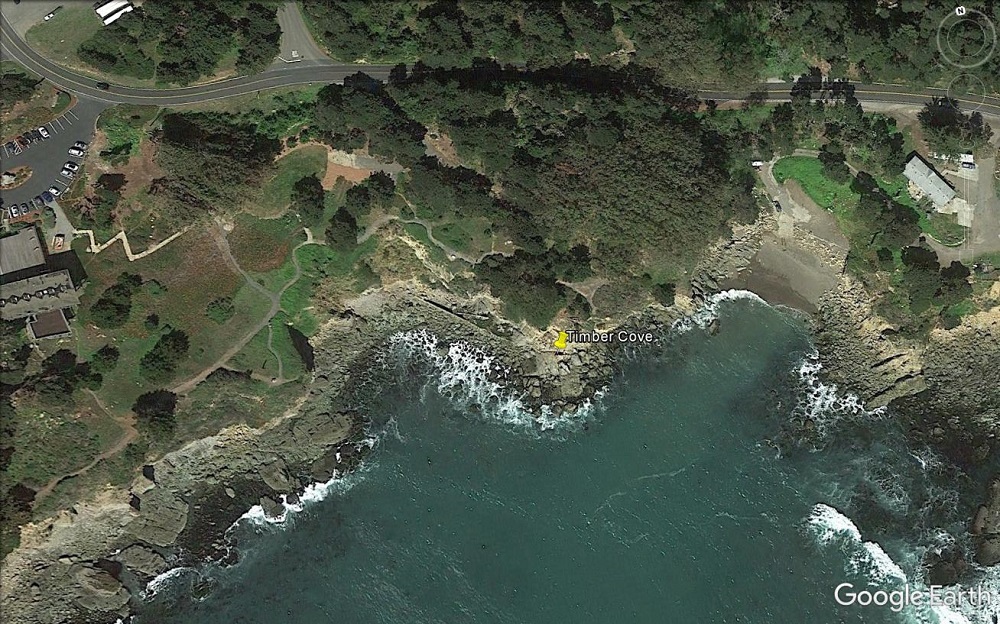
Euro-American settlement at Timber Cove began around 1856 with the construction of a hotel, store, post office, express office, and several dwellings over the subsequent years. These facilities supported a lumber chute built sometime that decade making it the first such apparatus in the area. In 1861, Mr. George Weber and D. L. B. Ross built a mill nearby on a ridge one and a half miles inland from the Timber Cove that only lasted for three years. This location was re-occupied by Scottish immigrant William R. Miller who had arrived in the area sometime around 1863. Miller’s saw mill was in operation by 1867, and its output largely denuded the coastal hillsides of marketable timber by the 1870s.
Timber Cove was a very busy place. Historians documented the transshipment of 481 schooner cargos between 1868 and 1874. An 1876 description of the lumbering activities at Timber Cove related that the single trough chute on its northwest side was used to load vessels with cord wood, fence posts, railroad ties, tan bark, and produce. Ernest Saltzig replaced the slide chute at Timber Cove with a wire chute in 1921, locating it on the same high bluff between the present day Timber Cove Boat Landing and Timber Cove Inn. This wire chute was a transplant from Fort Ross. By 1925, the lumbering activities at Timber Cove ceased and were replaced by ranching and dairy operations, a common transition along the Sonoma coast.
During the doghole ports survey in 2016, archaeologists documented Timber Cove’s connection to the lumber industry through the remains that still reside there today. The team recorded several iron bolts and pins, eye bolts, wire rope, and turn buckles. At the nearby Timber Cove Boat Landing, several anchors and lengths of chain decorate the entrance sign and surrounding gardens. While a direct connection between these items and the Timber Cove anchorage has not been determined, it is likely they were recovered by SCUBA divers from Timber Cove or an adjacent port and are part of the area’s larger maritime cultural landscape.
-- Deborah Marx, Maritime Archaeologist, Maritime Heritage Program, Office of National Marine Sanctuaries

A schooner loading at the slide chute in Timber Cove.
Credit: Fort Ross Conservancy

The U.S. Coast and Geodetic Survey T-sheet from 1876 depicts one lumber chute at Timber Cove.
Credit: NOAA’s Historical Map & Chart Collection
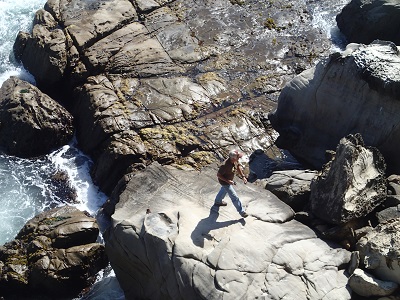
View from the top of the bluff of California State Parks archaeological Richard Fitzgerald exploring the rocks for lumber chute remains.
Credit: NOAA ONMS and California State Parks
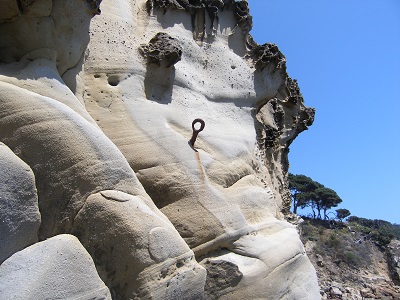
An iron eye projecting out of the cliff face at Timber Cove.
Credit: NOAA ONMS and California State Parks

Sonoma State University graduate student Jason Field uses a GPS to record site features amongst the boulders.
Credit: NOAA ONMS and California State Parks
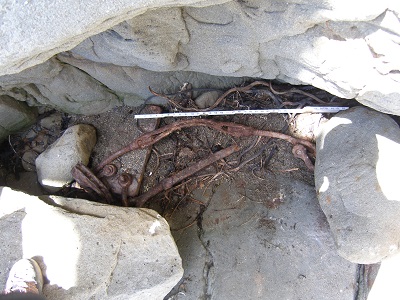
Rusted lumber chute hardware in a crevice at the base of the Timber Cove cliff.
Credit: NOAA ONMS and California State Parks

This iron plate bolted to the rocks provided a strong connection point for the cables that secured the chutes to shore.
Credit: NOAA ONMS and California State Parks
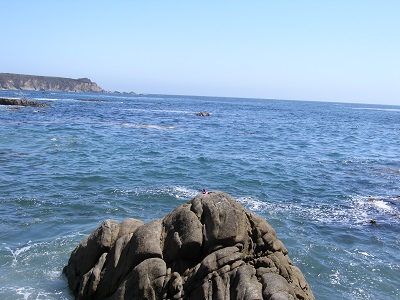
Pins set into the offshore rocks at Timber Cove, like this one marked with pink flagging tape, are indicators of where the trough chute sat.
Credit: NOAA ONMS and California State Parks
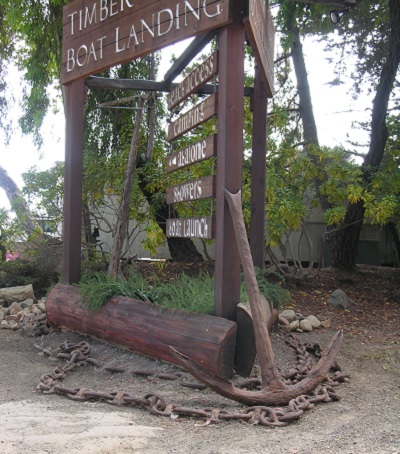
Timber Cove Boat Landing is home to a variety of anchors connected to Sonoma Coast’s maritime cultural landscape.
Credit: James P. Delgado, NOAA ONMS

